No products in the cart.
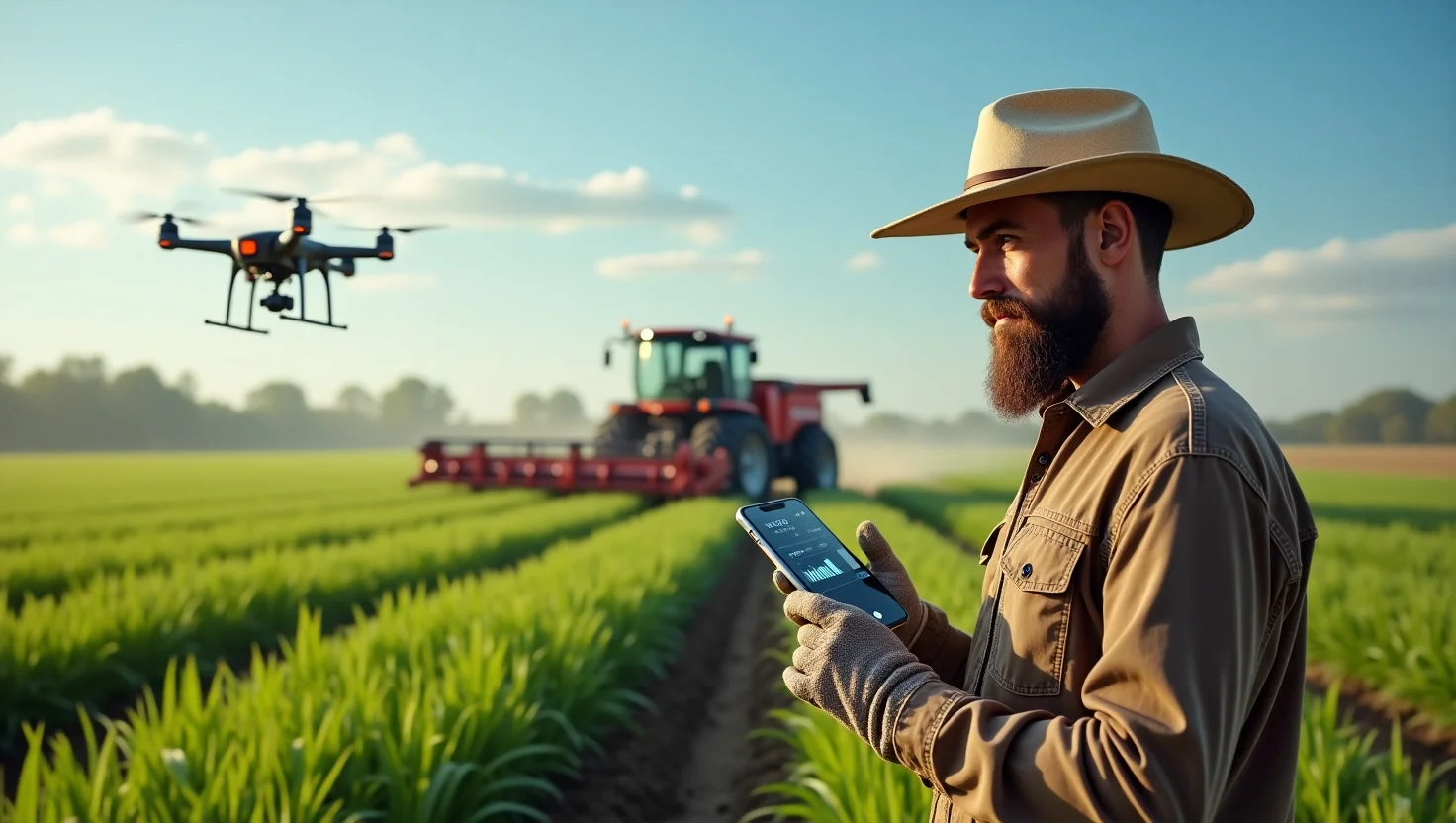
1. Introduction:
Across the rolling fields of the United States, a quiet revolution is reshaping the way we grow our food. It’s not about bigger tractors or better seeds, it’s about artificial intelligence (AI) and the rise of precision agriculture. Farmers today face mounting pressure: unpredictable weather, rising input costs, shrinking labor pools, and an ever-growing demand for food. Traditional farming practices are struggling to keep up. This is where AI steps in as more than just a buzzword, it’s becoming a crucial tool in modern farming.
AI in Precision agriculture, fueled by AI, is changing how we approach everything from planting to harvesting. Using a mix of satellite data, sensors, machine learning algorithms, and predictive analytics, farmers can now make smarter decisions tailored to each square foot of their land. This means less waste, better yields, and more sustainable operations overall.
In the U.S., the adoption of AI in agriculture is gaining speed, with technologies like AI-powered crop monitoring, AI pest detection systems, and intelligent irrigation tools becoming more accessible, even for small and mid-sized farms. Still, many are unaware of how transformative these tools can be or are unsure of where to start.
This article explores how AI is powering precision agriculture in the United States, what it is, how it works, the benefits it offers, and the challenges it brings. Whether you’re a farmer, investor, student, or tech enthusiast, understanding this shift is essential to keeping pace with the future of food production.
2. What Is Precision Agriculture?
Precision agriculture is an innovative farming approach that leverages data and technology to optimize agricultural inputs and practices. Instead of managing entire fields uniformly, farmers using precision agriculture treat each section based on its unique needs. This data-driven method uses tools like GPS-guided tractors, remote sensors, drone surveillance, and now increasingly, AI-powered platforms to make smarter decisions.
The concept first gained traction in the U.S. in the 1990s, largely through satellite-based field mapping and GPS navigation. However, recent advancements in machine learning, real-time analytics, and IoT (Internet of Things) devices have elevated it to a whole new level. AI systems now analyze soil health, crop conditions, and even microclimate changes to make highly accurate recommendations on seeding, fertilization, and irrigation.
For example, instead of applying water or fertilizer evenly across a field, precision farming systems can identify specific zones that need attention, reducing waste and enhancing crop productivity. The benefits are measurable: lower input costs, reduced environmental impact, and increased crop yields.
As the U.S. faces challenges like water scarcity and increasing input prices, this targeted approach is becoming a cornerstone of smart farming strategies. Whether it’s row crop production in the Midwest or specialty crops in California, precision agriculture in the United States is evolving fast, driven by the power of AI.

3. How AI Powers Precision Agriculture
Artificial intelligence is the backbone of modern precision agriculture, taking farm decision-making from reactive to predictive. By analyzing massive volumes of real-time data, like weather patterns, soil moisture levels, satellite imagery, and crop health, AI enables farmers to anticipate problems and take proactive steps.
One of the most impactful applications is AI crop monitoring. With drones, satellite imaging, and computer vision, AI algorithms detect subtle signs of stress in plants, such as nutrient deficiencies, pest infestations, or diseases, far earlier than the human eye. These early warnings allow for targeted interventions, saving both time and resources.
Another breakthrough is predictive analytics in agriculture. By using historical and real-time data, AI models forecast optimal planting windows, yield potential, and even market conditions. This helps farmers make data-backed decisions on everything from seed selection to harvest timing.
AI irrigation systems also play a major role. Powered by machine learning and sensor data, these systems automate water delivery based on real-time crop needs, significantly reducing water waste and improving sustainability, especially critical in drought-prone regions like California and Texas.
The power of AI lies in its ability to personalize farming at scale. Rather than treating entire fields uniformly, AI systems adjust inputs on a micro-level, increasing efficiency and profitability. Major platforms like IBM Watson Decision Platform for Agriculture, Microsoft Azure Farm Beats, and startups like Taranis and CropX are leading the way.
4. Benefits of AI in U.S. Agriculture
AI is revolutionizing U.S. agriculture by offering a wealth of benefits that make farming more efficient, sustainable, and profitable. One of the key advantages is water efficiency. In drought-prone regions like the Southwest, AI-powered irrigation systems ensure that water is used only where it’s needed, dramatically reducing waste and conserving precious resources.
Additionally, AI’s ability to monitor crop health in real-time is improving pest control and disease management. AI systems analyze data from sensors and drones to detect early signs of infestations or diseases, allowing farmers to intervene before widespread damage occurs. This proactive approach not only reduces the need for chemical treatments but also ensures healthier crops and higher yields.
The use of machine learning algorithms to optimize fertilizer application is another game-changer. AI analyzes soil composition and crop needs to determine the ideal amount of fertilizer to apply, reducing both environmental impact and input costs. The result? More efficient use of resources and better environmental sustainability.
Moreover, AI’s ability to forecast weather patterns and predict optimal planting and harvesting windows can significantly enhance crop yields. By making farming decisions based on reliable, data-driven insights, farmers can maximize their productivity while minimizing risk.
The combination of these benefits makes AI a transformative tool for U.S. agriculture, helping farmers tackle modern challenges while maintaining profitability and sustainability.

5. Challenges & Ethical Concerns
While AI offers significant benefits to U.S. agriculture, there are notable challenges and ethical concerns that must be addressed. One major issue is data privacy. As AI systems collect vast amounts of data on soil health, crop conditions, and farm operations, there are growing concerns about who owns this data and how it’s used. Farmers must ensure that their data is protected from misuse while balancing the need for shared data that drives AI improvements.
Another challenge is accessibility. While large-scale farms have the resources to implement advanced AI systems, smaller farms may struggle to adopt these technologies due to high initial costs. To promote fairness and ensure that AI in agriculture benefits all farmers, government programs and private-sector initiatives are working to make these technologies more affordable and accessible.
There are also concerns about AI bias. If AI systems are trained on skewed or incomplete data, they may offer recommendations that are not applicable to all regions or crops. This is particularly concerning in agriculture, where localized knowledge and conditions are crucial to success. Farmers must ensure that AI systems are continually updated with accurate, diverse datasets to avoid these issues.
Lastly, ethical AI practices must be prioritized. Ensuring that AI applications are transparent, fair, and unbiased is essential to building trust among farmers and the public. As the role of AI in agriculture grows, it’s critical that the technology is developed responsibly and with consideration of its social and economic impact.
6. Case Study: AI Adoption in Midwest Corn Farming
The adoption of AI in Midwest corn farming serves as a powerful example of how precision agriculture can transform traditional farming practices. A family-owned farm in Iowa, for instance, began using AI-powered sensors and drones to monitor crop health and soil conditions in real-time. These technologies allowed the farm to optimize irrigation schedules and apply fertilizers only where needed, dramatically reducing both water waste and input costs.
AI models also helped predict potential yield outcomes, enabling the farm to plan harvesting with greater accuracy and reduce waste. This data-driven decision-making led to a 15% increase in yield without expanding the farm’s footprint. With the ability to identify early signs of diseases and pest infestations, AI allowed farmers to act swiftly, minimizing crop damage and reducing the need for pesticides.
Additionally, the farm implemented machine learning algorithms to analyze historical data and forecast weather patterns, allowing them to plan planting and harvesting more efficiently. These tools helped the farm adapt to changing climate conditions, ensuring that crops thrived even in unpredictable weather.
By leveraging AI, this farm not only increased productivity but also improved its sustainability practices. As more farms in the Midwest adopt similar AI-driven technologies, we are likely to see a wider transformation in U.S. agriculture, with farmers across the country benefiting from smarter, more efficient farming techniques.

7. The Road Ahead: Future Trends & Innovations
The future of AI in precision agriculture looks incredibly promising, with several emerging technologies set to shape the next wave of farming innovations. One of the most exciting trends is the rise of autonomous farm machinery. Self-driving tractors, harvesters, and drones powered by AI will reduce the need for manual labor while increasing operational efficiency. These machines will work seamlessly around the clock, optimizing processes like planting, weeding, and harvesting, all based on real-time data.
Another key innovation is the integration of satellite-based AI for real-time, global crop monitoring. AI systems will be able to predict pest outbreaks, drought conditions, and soil degradation on a global scale, allowing farmers to take early action before issues spread. This approach will not only improve individual farm productivity but will also contribute to global food security by providing farmers with the tools they need to respond to large-scale agricultural challenges.
In addition, AI-powered decision support systems are becoming more advanced, enabling farmers to make highly informed, data-backed decisions. With AI, farms can continuously adjust their operations based on weather conditions, market trends, and crop health, ensuring the most sustainable and profitable outcomes.
As investment in ag-tech continues to grow, more affordable AI solutions will become available to small and mid-sized farmers, helping bridge the technology gap. The future of AI in agriculture is about creating smarter, more sustainable farms that not only increase yields but also support the long-term health of the environment.
8. Conclusion & Call to Action
As we’ve explored, AI is not just transforming the future of farming—it’s redefining how we grow our food today. From AI-powered sensors to autonomous machinery, these cutting-edge technologies offer powerful tools to make farming more efficient, sustainable, and profitable. The integration of machine learning, predictive analytics, and real-time monitoring allows farmers to make data-driven decisions that improve crop health, maximize yields, and reduce environmental impact.
However, the full potential of AI in agriculture is yet to be realized. While the technology is gaining traction, there are still significant challenges ahead, especially in terms of accessibility, data privacy, and ensuring ethical AI use. As more farmers adopt these tools, it’s crucial to address these issues to create a fair and sustainable agricultural future.
For those in the farming community, this is the moment to embrace the change that AI brings. For tech innovators, there is an immense opportunity to continue developing accessible, impactful solutions. Together, the collaboration between agriculture and technology will pave the way for a smarter, more sustainable future of food production.
The time to act is now—let AI revolutionize your farming practices. Start exploring AI tools, educate yourself about precision agriculture, and join the movement towards a more efficient, eco-friendly farming landscape.
Call to Action: Ready to take the next step? Discover how AI can benefit your farm. Explore the latest technologies and consider integrating them into your operations today!
FAQs:
Q1. What is precision agriculture, and how does AI enhance it?
Precision agriculture involves using technology to observe, measure, and respond to variability in crops and soil. AI enhances this by analyzing data from sensors, drones, and satellites to optimize planting, irrigation, and harvesting, leading to increased efficiency and sustainability.
Q2. How can AI improve crop yields and reduce resource usage?
AI can increase crop yields by up to 30% while reducing water usage by 20-50%. It achieves this through precise application of water, fertilizers, and pesticides, minimizing waste and maximizing productivity.
Q3. What are the main challenges in adopting AI in agriculture?
Key challenges include high initial costs, data privacy concerns, and the need for technical expertise. Additionally, integrating AI with existing farming practices and ensuring equitable access for small-scale farmers are ongoing issues.
Q4. What are some real-world examples of AI applications in U.S. agriculture?
In Iowa, a family-owned farm utilized AI-powered sensors and drones to monitor crop health and soil conditions, optimizing irrigation and fertilizer use. This led to a 15% increase in yield without expanding the farm’s footprint.
Q5. What does the future hold for AI in U.S. agriculture?
The future includes the development of autonomous machinery, satellite-based AI for global crop monitoring, and advanced decision support systems. These innovations aim to make farming more efficient, sustainable, and resilient to challenges like climate change and labor shortages.
Related Articles
Livestock Farming
AI in Aquaculture: How Smart Tech is Transforming Fish Farming
1. Introduction: The world’s appetite for seafood is growing fast, yet traditional...
Livestock Farming
The Future of Farming: Why AI-Powered Tractors Are Gaining Popularity
1. Introduction: Across the world, farmers are grappling with rising costs, shrinking...
Livestock Farming
Using AI to Track Livestock Health and Prevent Disease Outbreaks
1. Introduction: In recent years, livestock farmers around the world have faced...
Livestock Farming
How Machine Learning Is Changing Fertilizer Application on Farms
1. Introduction: For decades, farmers have applied fertilizer using general formulas, blanket...
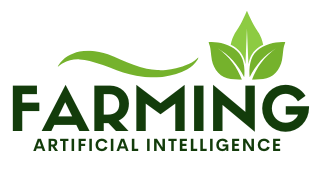


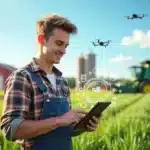

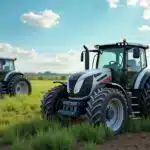


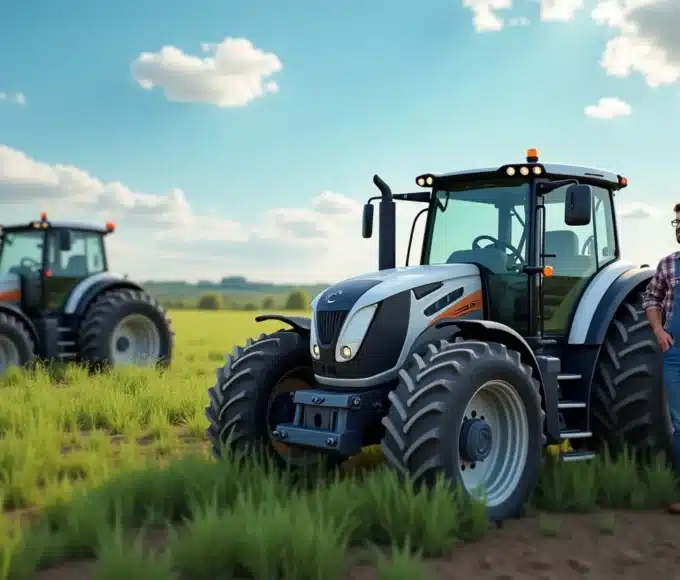
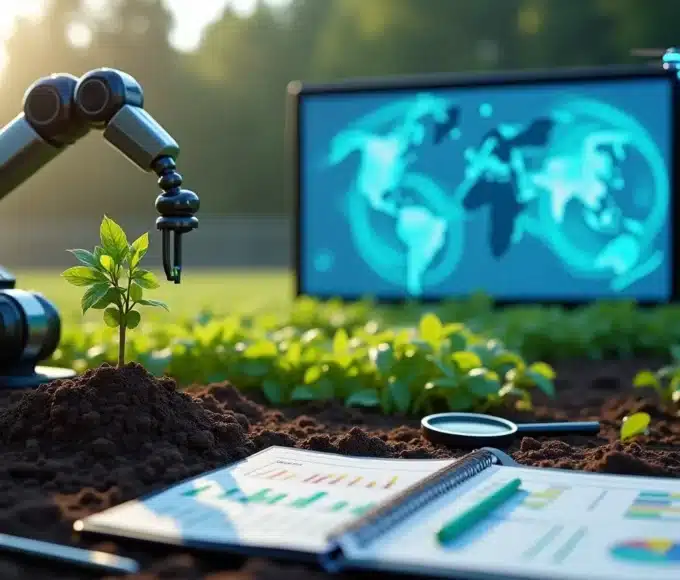
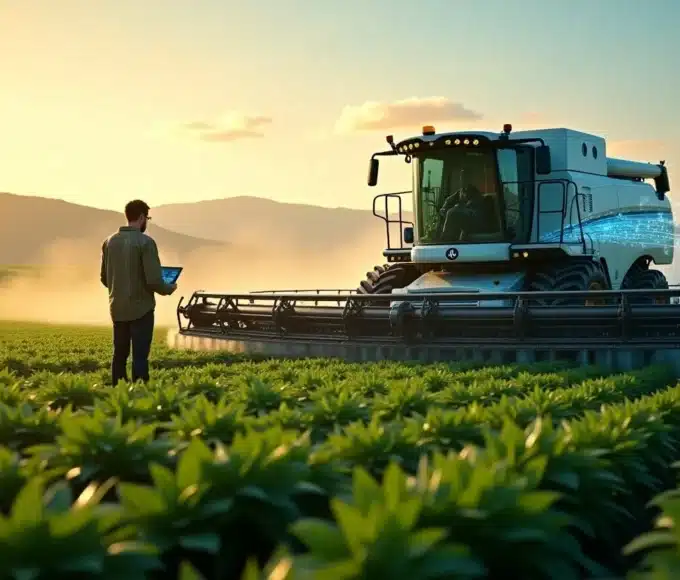
Leave a comment